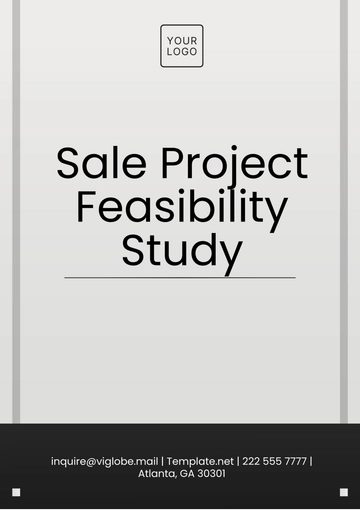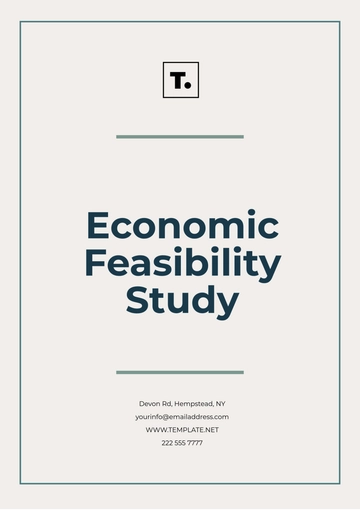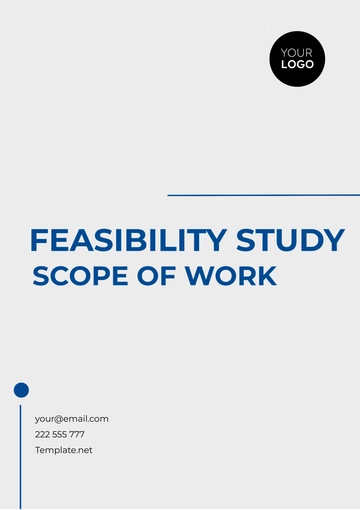Free Aesthetic Social Feasibility Study

Prepared by: [Your Name]
Date: November 10, 2050
1. Executive Summary
This study evaluates the feasibility of developing Riverside Community Park, aimed at enhancing recreational opportunities and fostering community engagement. The project is anticipated to provide various facilities that cater to all age groups and promote healthy lifestyles. Preliminary findings suggest significant community support and a positive impact on local well-being, though some traffic and noise concerns will need addressing.
2. Project Description
Location: 123 Riverside Drive, Hometown, State.
Purpose: To create a vibrant recreational space for residents, promoting physical activities, community events, and environmental awareness.
Scope: The project includes:
Walking and biking trails (1.5 miles)
A playground for children aged 2-12
Multi-sport courts (basketball, tennis)
Picnic areas with tables and grills
An open green space for community events
3. Community Profile
A. Demographics:
Population: 15,000 residents
Age Distribution: 30% under 18, 50% aged 18-65, 20% over 65
Median Household Income: $55,000
Ethnic Composition: 60% Caucasian, 20% Hispanic, 15% African American, 5% Asian.
B. Community Needs:
Current recreational facilities include one small park with limited equipment.
High demand for more accessible spaces for families and seniors, particularly for outdoor activities.
4. Stakeholder Engagement
A. Identification of Stakeholders:
Residents of Hometown
Local schools (Hometown High School, Riverside Elementary)
Neighborhood associations
Local businesses (shops and restaurants nearby)
Hometown Parks and Recreation Department
B. Consultation Process:
Conducted an online survey with 400 responses (80% in favor of the park).
Held two public meetings with over 50 attendees each to discuss needs and gather feedback.
5. Social Impact Assessment
A. Positive Impacts:
Increased Recreational Opportunities: New facilities will cater to diverse interests and age groups.
Community Cohesion: A gathering place for events will foster relationships among residents.
Improved Mental Health: Access to green spaces is linked to reduced stress and increased happiness.
Economic Boost: The anticipated increase in foot traffic could benefit local businesses.
B. Negative Impacts:
Traffic and Noise: Increased visitor numbers may lead to higher traffic volumes and noise levels in the neighborhood.
Displacement: Temporary displacement of residents due to construction activities.
Environmental Concerns: Potential disruption to local wildlife during development.
6. Mitigation Strategies
Traffic Management: Implement traffic calming measures and additional signage during peak hours.
Noise Control: Schedule construction during off-peak hours and provide regular updates to residents.
Environmental Protection: Conduct an environmental assessment and implement wildlife protection measures.
7. Cost-Benefit Analysis
A. Projected Costs:
Construction: $500,000
Maintenance (annual): $20,000
B. Anticipated Benefits:
Estimated increase in community engagement (30% increase in participation in recreational activities).
Improved public health metrics with an expected reduction in obesity rates by 5% over five years.
8. Implementation Plan
A. Timeline:
Phase 1: Site preparation (3 months)
Phase 2: Construction of facilities (6 months)
Phase 3: Opening and community events (1 month)
B. Responsibility:
The Hometown Parks and Recreation Department will oversee construction and maintenance.
Community volunteers will help organize events and activities.
C. Funding Sources:
Local government grants: $300,000
Community fundraising initiatives: $100,000
Sponsorships from local businesses: $100,000
9. Monitoring and Evaluation
Performance Indicators:
Usage rates of park facilities (target of 500 visitors per week).
Community feedback through annual surveys.
Monitoring environmental impacts through quarterly assessments.
10. Conclusion
The Riverside Community Park project aligns with community needs and presents significant potential for enhancing local quality of life. While challenges such as traffic and noise exist, appropriate mitigation strategies can minimize these effects. Overall, the project is poised to foster community engagement, promote health, and contribute positively to Hometown.
- 100% Customizable, free editor
- Access 1 Million+ Templates, photo’s & graphics
- Download or share as a template
- Click and replace photos, graphics, text, backgrounds
- Resize, crop, AI write & more
- Access advanced editor
Unlock your project's potential with the Aesthetic Social Feasibility Study Template from Template.net. This fully customizable and editable template allows you to tailor your study to meet specific needs. Effortlessly edit using our AI Editor Tool, making it simple to create a professional document that aligns with your vision and goals. Perfect for any project!





























